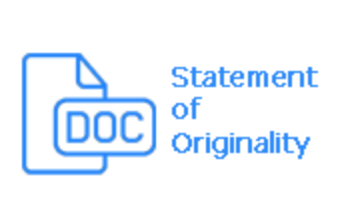IDENTIFYING AND MEASURING THE WEIGHTS OF HALAL COMPLIANCE RATING (HCR) COMPONENTS OF BEST HALAL PRACTICES BY APPLYING AHP METHOD
Abstract
The halal industry in restaurant chain is lacking a rating system that would help the consumers to choose their preferences and enhance the halal integrity. In this regard, as a first step to develop a halal compliance rating (HCR) tool, the objective of this research is to identify and select the components of best halal practices for restaurants. This was achieved by reviewing existing relevant rating systems, standards, and research papers. The selected ten components were weighed by applying Analytic Hierarchy Process (AHP) method of decision making through the participation of 15 experts where the maximum priority was given to ‘Hygiene and Food Safety (HFS)’ component with a weightage of 22.3%. The least priority was given to ‘Branding, Packaging, and Labelling (BPL)’ with a weightage of 4.4%. The consistency ratio was checked as 0.015. Additionally, the study investigates the auditable and measurable areas of the selected ten HCR components.
Keywords
Full Text:
PDFReferences
AHMAD, A. N. B. (2018). Implementation of Halal Food Management System In Small And Medium Enterprises Food Manufacturers (Issue August). University Putra Malaysia.
Baharuddin, S. A., & Ismail, R. M. (2018). Halal compliance impact on organizational performance: The role of religiosity. International Journal of Supply Chain Management, 7(5), 455–460.
Department of Standards Malaysia. (2014). MS 2565:2014 Halal Packaging - General Guidelines (Patent No. ICS: 55.020). http://www.standardsmalaysia.gov.my
Food Safety and Quality Division, & Malaysia, M. of H. (2009). FOOD HYGIENE REGULATIONS 2009. https://www.fmm.org.my/images/articles/GS1 Malaysia/Presentation FMM Food Hygiene.pdf
ISO. (2018). ISO22000: Food safety management systems-Requirements for any organization in the food chain. http://www.bizna.ir/upload/emn/1593363136.pdf
JAKIM. (2015). Manual Procedure for Malaysia Halal Certification (Third Revision) 2014. In Manual Procedure for Malaysia Halal Certification (Third Revision) 2014. https://doi.org/10.1017/CBO9781107415324.004
Marzuki, S. Z. S., Hall, C. M., & Ballantine, P. W. (2012). Restaurant managers’ perspectives on halal certification. Journal of Islamic Marketing, 3(1), 47–58. https://doi.org/10.1108/17590831211206581
MS 2610. (2015). Muslim friendly hospitality services - Requirements.
Noordin, N., Md Noor, N. L., Hashim, M., & Samicho, Z. (2009). Value chain of Halal certification system: A case of the Malaysia Halal Industry. Proceedings of the European and Mediterranean Conference on Information Systems, EMCIS 2009, January 2009.
Rahman, I. N. A., Saleh, R., Rahman, S. A., & Hashim, D. (2012). A Review on factors of non-compliance of halal standards among restaurant operators in kuala lumpur. In International Business Management (Vol. 6, Issue 6, pp. 611–620). https://doi.org/10.3923/ibm.2012.611.620
Razalli, M. R., Abdullah, S., & Yusoff, R. Z. (2013). The Influence of Human factors in Halal Certification Process on Organizational Performance. World Review of Business Research, 3(3), 157–166.
Romeiss-Stracke, F. (1995). Service-Qualität im Tourismus: Grundsätze und Gebrauchsanweisungen für die touristische Praxis.
Salindal, N. A. (2019). Halal certification compliance and its effects on companies’ innovative and market performance. Journal of Islamic Marketing, 10(2), 589–605. https://doi.org/10.1108/JIMA-04-2018-0080
Sorooshian, S., & Dahan, S. M. (2013). Analysis on factors of non-compliance of Halal standard. Journal of Engineering and Applied Sciences, 8(9), 280–281. https://doi.org/10.3923/jeasci.2013.280.281
STANDARD, M. (2019a). MS 1500:2009 Halal Food - Production, Preparation, Handling and Storage - General Guidelines. Department of Standards Malaysia, 1997.
STANDARD, M. (2019b). MS1480_2019: Food safety according to Hazard Analysis and Critical Point (HACCP) system (second revision) (Patent No. ICS: 67.020). http://www.jsm.gov.my
Tan, B. C., Lau, T. C., Yong, G. F., Khan, N., & Nguyen, T. P. L. (2019). A qualitative study of green practices adoption for restaurants in Malaysia. Social Responsibility Journal, 15(8), 1087–1099. https://doi.org/10.1108/SRJ-07-2017-0119
Ungku Fatimah, U. Z. A., Boo, H. C., Sambasivan, M., & Salleh, R. (2011). Foodservice hygiene factors-The consumer perspective. International Journal of Hospitality Management, 30(1), 38–45. https://doi.org/10.1016/j.ijhm.2010.04.001
Yahya, H., Samicho, Z., Firdaus, A., & Nurul, M. (2016). A Review on Application of Halalan-Toyyiban Risk Management Plan ( HTRMP ) and Frozen Food Chain during Warehousing Activities for Maintaining Halal , Safety , and Quality. Journal of Applied Enviromental and Biological Sciences, 6(11), 96–102.
Zannierah, S., & Marzuki, S. (2016). Halal Certification: A Viewpoint From Malaysian Restaurant Managers. Asia-Pacific Journal of Business Review, 1(1), 23–39. https://doi.org/10.20522/APJBR.2016.1.1.23
Zannierah Syed Marzuki, S., Hall, C. M., & Ballantine, P. W. (2012). Restaurant managers’ perspectives on halal certification. Journal of Islamic Marketing, 3(1), 47–58. https://doi.org/10.1108/17590831211206581
DOI: http://dx.doi.org/10.30659/ijibe.6.2.104-118
Refbacks
- There are currently no refbacks.

This work is licensed under a Creative Commons Attribution-ShareAlike 4.0 International License.
IJIBE (International Journal of Islamic Business Ethics) has been Indexed by













